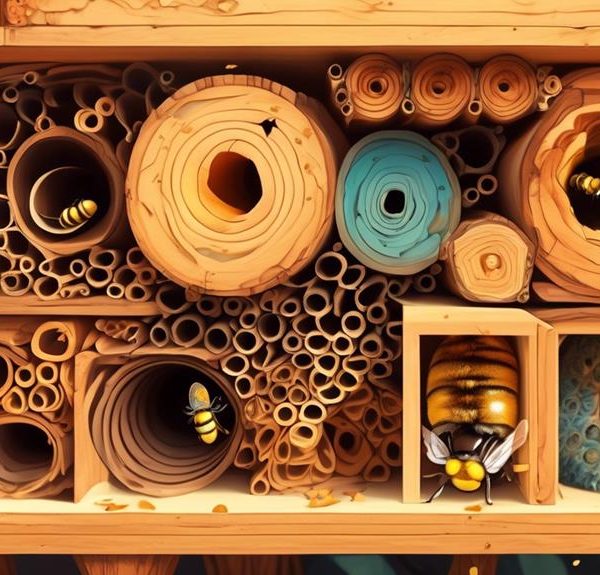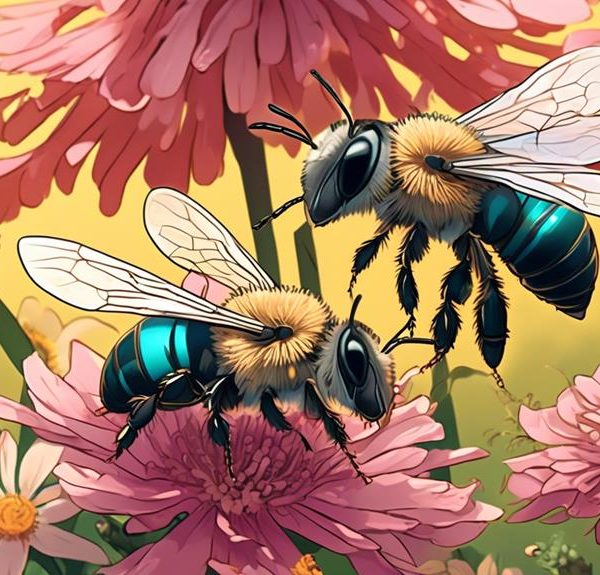Behold the fascinating biology and behavior of mason bees as they masterfully carry mud, a spectacle of nature's stunning adaptability.
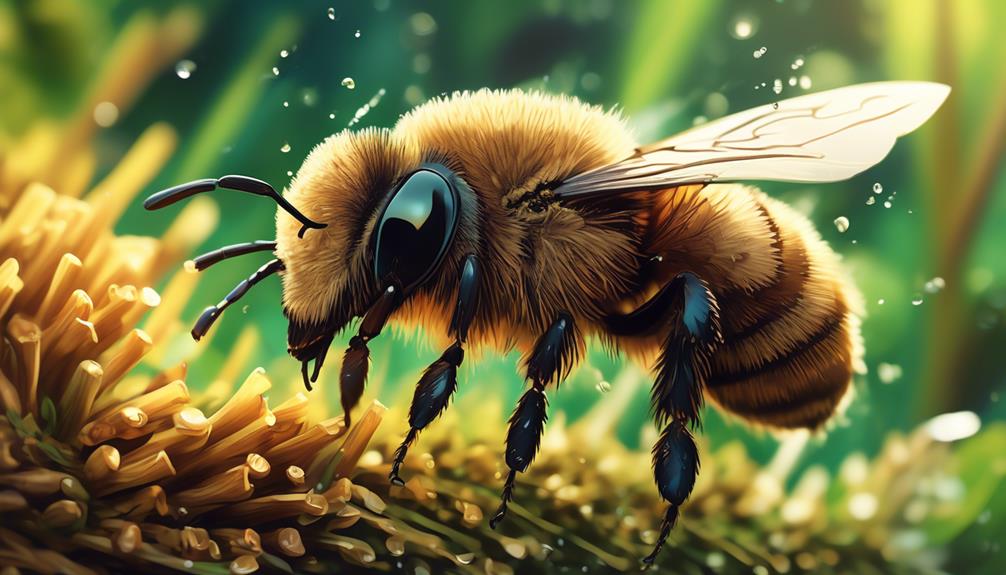
How Do Mason Bees Carry Mud?
Imagine the intricate dance of a mason bee as it hovers over a wet patch of soil, its tiny legs working feverishly to gather mud.
You might wonder how such a small creature can carry something seemingly so heavy.
Well, it's not magic, but a fascinating combination of biology and behavior.
This might lead you to question, how exactly do mason bees carry mud?
The answer to that is a blend of incredible natural design and stunning adaptability; something you wouldn't want to miss.
Key Takeaways
- Mason bees collect mud using their mandibles and front legs.
- Mud is crucial for the existence, development, and survival of mason bees and their offspring.
- Mason bees transport mud balls beneath their bodies for optimal balance during flight.
- Mason bees construct their nests with mud, shaping it into a cellular structure and sealing it with additional layers.
Understanding Mason Bees
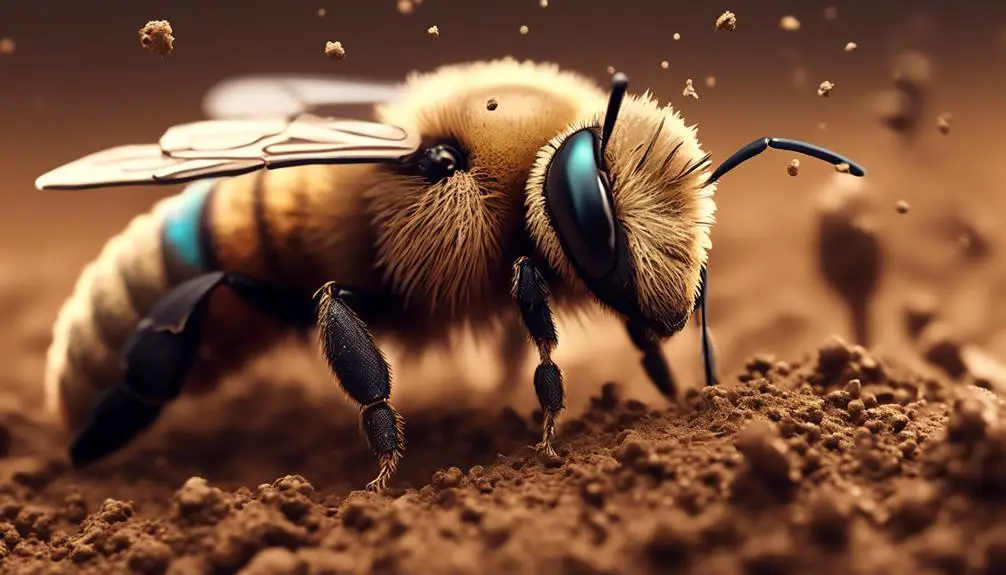
Diving into the world of Mason Bees, you'll find their behaviors fascinating, particularly their ability to transport mud, a crucial element in their nest-building process. Unlike honeybees, Mason Bees are solitary creatures, each female working independently to construct her own nest. They don't produce wax or honey, and instead, they utilize mud and natural cavities for their nest-building.
You might wonder, how do they transport mud? Their method is quite ingenious. Mason bees use their mandibles (mouthparts) and front legs to collect wet mud. They'll gather a ball of mud, sometimes as large as their own head, and fly it back to their nest site. They're not just strong but very efficient, often completing several mud-carrying flights in a day.
The science behind their nest-building process is intriguing. Each mud ball is used to construct a partition wall within the nest cavity. The female bee will lay an egg, provide it with pollen and nectar for nourishment, and seal it off with a mud partition. This cycle continues until the entire cavity is filled with brood cells.
You're now one step closer to understanding the fascinating world of Mason Bees.
The Importance of Mud
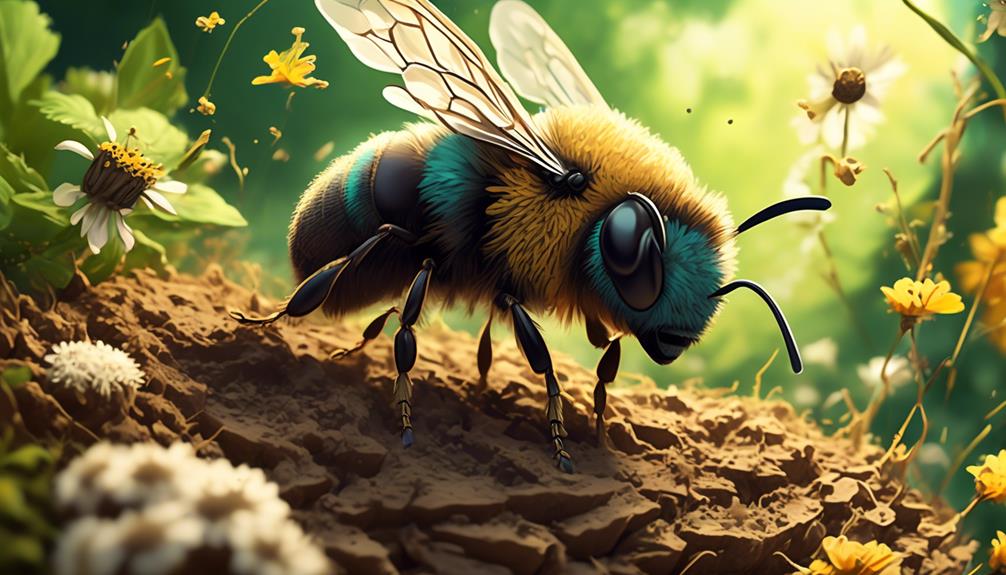
Having seen how Mason Bees expertly utilize mud for their nest-building process, it's crucial to understand its significant role in their life cycle and survival. To these industrious insects, mud isn't just dirt mixed with water. It's a valuable building material that's vital for their existence.
Let's delve into the science behind this. The female Mason Bee collects mud using her mandibles and front legs, then carries it to a suitable nesting site. She then uses this mud to construct partitions between the cells in her nest where she lays her eggs. Without mud, she wouldn't be able to create these compartments, which are essential for her offspring's development and survival.
Furthermore, the mud walls provide a secure barrier against predators and adverse weather conditions. These protective structures ensure the larvae mature safely until they're ready to emerge as fully-grown bees.
Just as clay is to a potter, mud is to Mason Bees. It's not just about carrying mud; it's about using it effectively for construction, protection, and ultimately, survival. Understanding this highlights the importance of conserving mud-rich habitats for these beneficial pollinators. Without mud, Mason Bees can't thrive, and without Mason Bees, our ecosystems would suffer.
Gathering Mud: A Process
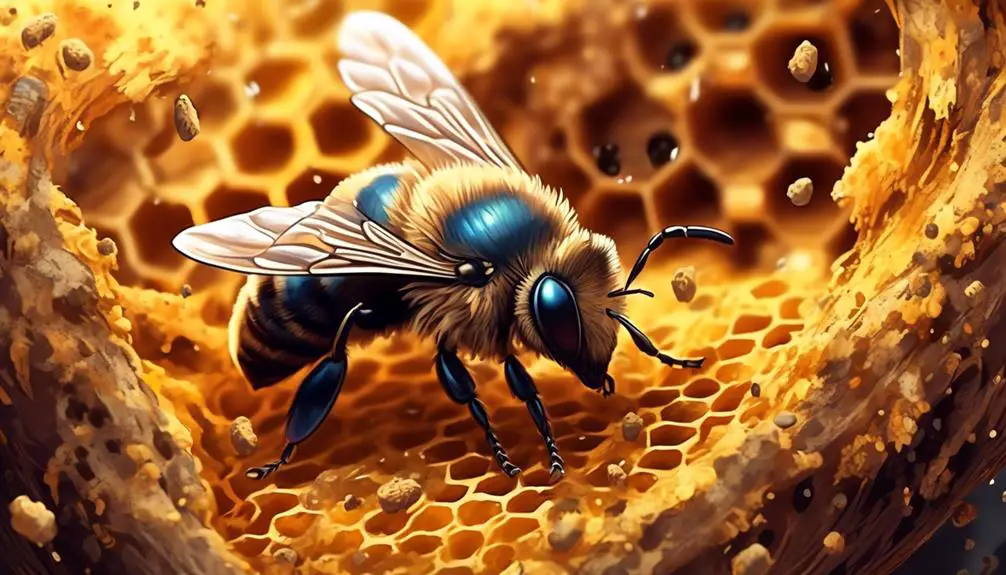
In the intricate process of gathering mud, Mason Bees exhibit a fascinating level of precision and efficiency that's worth understanding. These bees, you'll find, go to great lengths to acquire the perfect materials for their nests.
Mason Bees begin by scouting for a suitable mud source, which should be moist and malleable. Once located, they use their mandibles to gather the mud, meticulously carving out small chunks. They then transport this mud ball back to their nest, a journey that may require traversing significant distances.
This table provides a snapshot of the process:
Step | Description |
|---|---|
Scouting | Locating a suitable mud source |
Gathering | Using mandibles to carve out chunks |
Transporting | Carrying the mud ball back to the nest |
Utilizing | Incorporating the mud into the nest structure |
This process may seem laborious, but it's crucial for the bees' survival. The mud serves as a sturdy building material, providing a safe and secure environment for their offspring. The complexity of this process is yet another testament to the marvel of nature and the adaptability of these industrious insects.
Transporting Mud: An Art

Now, let's examine the art of transporting mud, a task that Mason Bees undertake with remarkable skill and precision after they've gathered the material. Using their powerful jaws, they pick up a mud ball, which they've meticulously crafted. This isn't a random process, but a calculated maneuver. They've to ensure the mud ball's weight doesn't surpass their carrying capacity.
You may wonder, how do they maintain the necessary balance during flight? It's all about positioning. They position the mud ball beneath their body, aligning it with their center of gravity. This allows for optimal balance and control during transportation.
They also have to consider the distance they'll fly. Given their size and energy reserves, they can't afford long, inefficient flights. So, they ensure they're always within a specific radius of their nesting site. This highlights their impressive spatial awareness and planning abilities.
Constructing Nests With Mud

Once the Mason Bees have successfully transported their mud balls, they swiftly get down to the business of constructing their nests. You'd marvel at their precision and meticulousness. They don't randomly stack mud; they use it to build complex, intricate structures.
They commence by selecting a suitable hollow, often in dead wood or hollow stems of plants. Then, the mason bee painstakingly shapes the mud into a cellular structure. It's like watching a master potter at work, each cell precisely formed and smoothed out. They use their mandibles and legs to mold the mud, and their abdomen to tamp it down, creating a sturdy, weatherproof barrier.
Next, the bee collects nectar and pollen, which it mixes into a sticky paste. This is placed into the mud cell, serving as food for the developing larvae. An egg is then laid on top of this provision. Finally, the bee seals off the cell with another layer of mud, effectively creating a safe haven for its offspring.
It's truly a marvel of nature, this intricate dance of mud, nectar, pollen, and eggs. It's a testament to the intricate adaptation and resilience of these industrious insects.
Conclusion
So, you see, mason bees aren't just ordinary bees. They've mastered the art of mud manipulation, using their powerful jaws to gather and transport it. It's a laborious process, reflecting their incredible determination and resourcefulness.
The mud they carry becomes a vital building block in creating their nests. This small act, often overlooked, underscores the essential role mason bees play in our ecosystem. It's a fascinating piece of the wider puzzle of the natural world.

